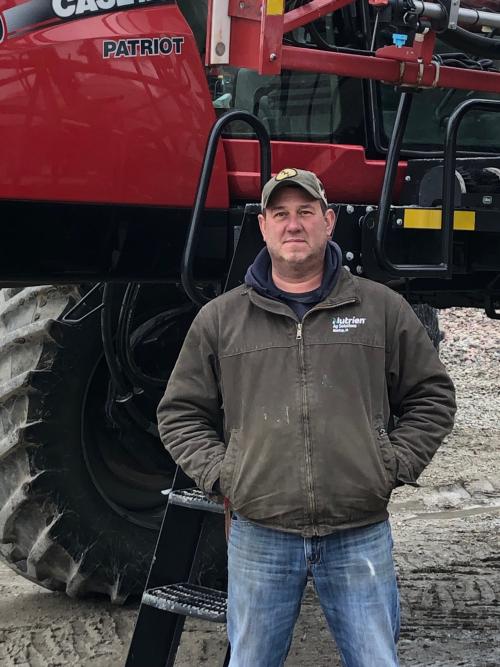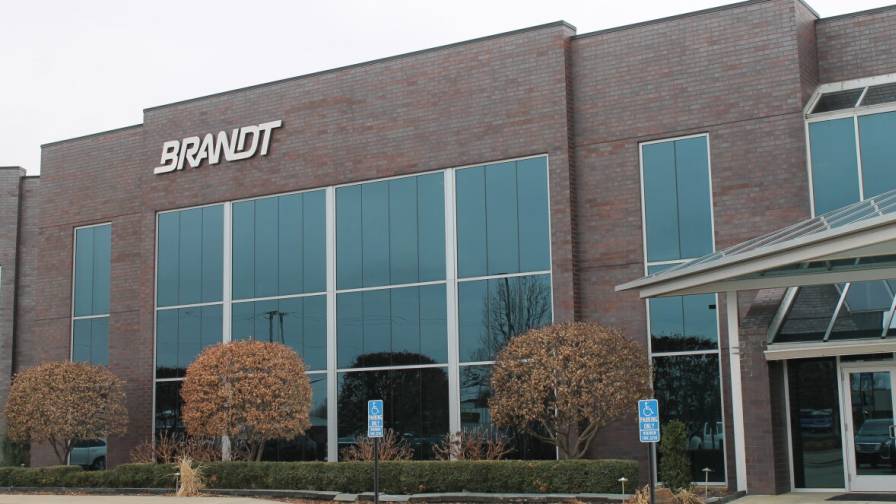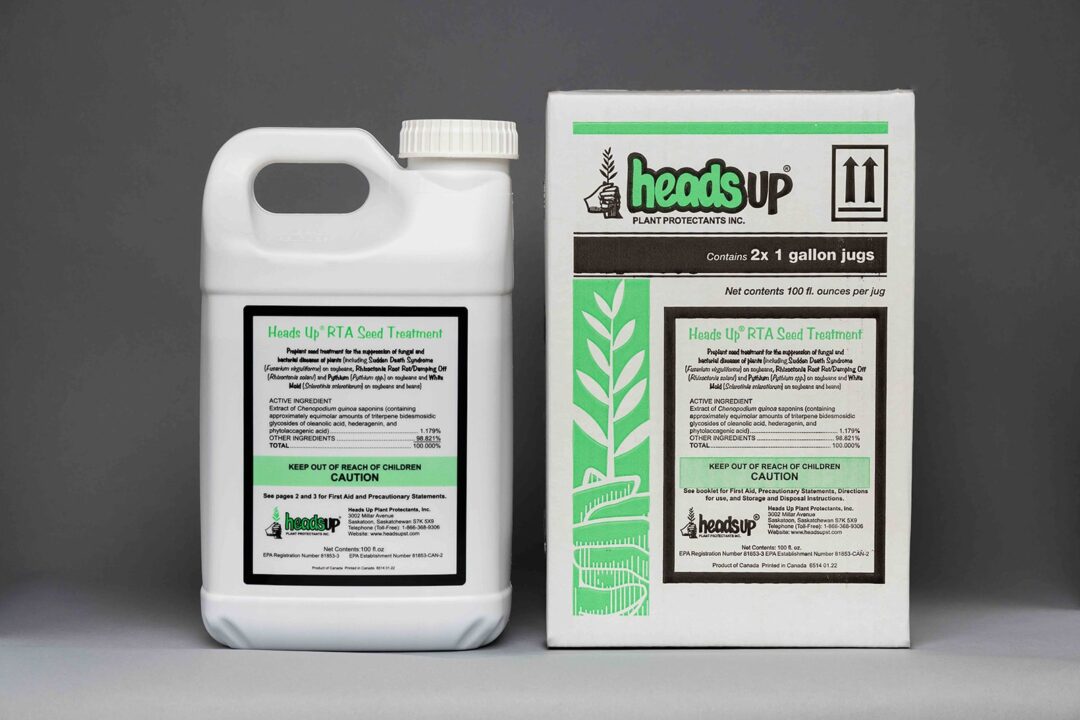Herbicide Application: Effective Management of Hard Water in Spray Solutions
Water quality is a frequently overlooked factor that can adversely affect the performance of pesticides, especially herbicides. Besides pH, water “hardness” is a key concern, with much of the agricultural water sources across the U.S. exhibiting high concentrations of calcium, magnesium, iron, sodium, and aluminum. These hard-water cations — especially calcium and magnesium — can wreak havoc in a spray tank when not managed.
Weak acid herbicides, such as glyphosate and 2,4-D, are most susceptible, but no herbicide chemistries are completely immune to the negative effects of hard water, including dicamba and sulfonylurea (SU) herbicides. Use of ammonium sulfate (AMS) in spray solutions only counters the effects of calcium hard-water cations, providing no protection whatsoever from magnesium and the others.

Iowa applicator Jason Winegar of Nutrien Ag Solutions has been able to eliminate having to handle and pour 50-pound bags of ammonium sulfate into his sprayer while in the field.
“When you do a good job of addressing hard water, the herbicides mix, blend, and apply much better,” says Jason Winegar, an applicator at Nutrien Ag Solutions in Dunlap, IA. “You get more uniform spray coverage, better adhesion to and penetration of herbicides to target weed species, and more control over drift by better managing spray droplet size and patterns.”
For eight years Winegar has driven floaters and high-clearance sprayers over at least 50,000 acres of corn and soybeans annually. He makes burndown, preemergence, and post-emergence over-the-top herbicide applications and often covers the same ground at least twice during any given growing season.
With a staff of five or six applicators, this Nutrien Ag Solutions location provides custom-application services on at least a quarter-million acres every year. Herbicides routinely applied include glyphosate, Accuron, Diflex, Caprino, Harness Extra, 2,4-D, and dicamba. In addition to his application work, Winegar also works in the company’s mixing and blending facilities.
Multiple Modes of Action
Water with high concentrations of magnesium and calcium is a challenge to manage when applying herbicides. Instead of AMS, Winegar uses a water conditioner, Choice Trio from Loveland Products, which offers three modes of action: sequestering, synthetic chelating, and complexing. The adjuvant, he says, reduces the effects of hard-water cations on herbicide performance, eliminating the need to use AMS.
“We can’t run AMS through the liquid system at the plant because it plugs things up,” Winegar says. “Instead, I have to add it directly to the sprayer while nursing in the field. This means I have to manually open 50-pound bags of granular AMS and pour them into the sprayer. It’s a handling issue that really slows us down when we need to focus on covering as many acres as quickly as possible. We can load the Choice Trio at the plant and do away with the AMS field-loading delays.”
Choice Trio is a liquid formulation available in 2.5-gallon pack sizes. Besides interfering with herbicide efficacy, hard water that isn’t properly buffered also takes its toll on equipment, including pumps, seals, screens, filters, and hoses. “This is another economic downside of hard water,” Winegar says. “It drives up maintenance costs because these items have to be replaced more often.”
Enhanced Grove Care
Commercial applicator Richard Byrd in South Florida makes herbicide applications in an area where water is exceptionally hard. Operating under Richard Byrd Caretaking, he conducts herbicide applications on 1,800 to 2,000 acres of orange groves, making three application trips per year for a combined 5,500 to 6,000 treated acres.
This work includes chemical mowing of grove middles and weed control in the tree line with residual and contact herbicides, including Karmex, Solicam, glyphosate, Tree Vix, and MSO. He uses high-end application equipment, GPS positioning, and other state-of-the-art technology.
“When I’m running flat out, I mix and apply 1,400 to 1,500 gallons of herbicide daily,” Byrd says. “Due to the concentrations of magnesium in the surface water I use as a carrier, I would have to stop two or three times a day — about every 400 to 500 gallons — to clean clogged filters. Then, a few weeks after application, there would be strips in the middles where weeds had not been controlled due to clogged nozzles or herbicide that didn’t mix very well.”
Another hard-water casualty was the toll it took on spray tanks. A nasty black substance would build up on tank bottoms and walls following herbicide applications. This was residue from the magnesium in the water, and cleaning it required a substantial amount of elbow grease. In 2015 Byrd began using Choice Trio adjuvant to better address the mixing, application, and staining issues associated with hard water.
“I haven’t had to clean the magnesium and chemical residues out of any spray tanks in the four years since I started using the adjuvant,” he says. “I also have greatly reduced — almost eliminated — the downtime associated with clogged filters, screens, and nozzles, as well as the misapplications of herbicides due to mixing issues.”
Byrd says 99.9% of mixtures in the tank are applied and that mixtures stay in suspension longer. “Any herbicide remaining in the tank after application is wasted money,” he notes. “And any herbicides that don’t mix properly are costing you money as well.”
Byrd adds that taming his hard water has had a profound effect on equipment maintenance costs. “I’m getting at least an extra year out of my pump seals, as well as from my pumps,” he says.
Other adjuvants that Byrd routinely relies upon include E-Z Mix when applying powdered or granular herbicides and LI 700 as a sticker/spreader to reduce drift, improve spray droplet retention by adhesion and spreading, and increase herbicide penetration without cuticle disruption. He no longer uses liquid AMS, he says, because he doesn’t have to.






